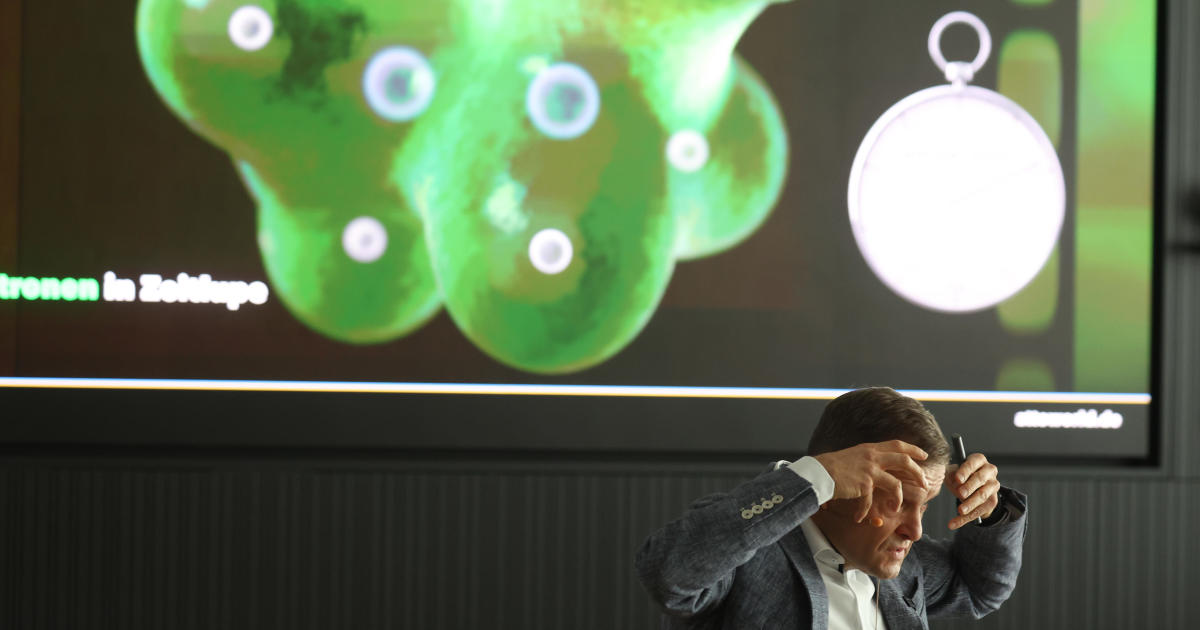[ad_1]
Stockholm — Three scientists received the Nobel Prize in physics on Tuesday for learning how electrons zip round atoms in fractions of seconds, a subject that might someday result in higher electronics or illness diagnoses. The award went to Pierre Agostini, Hungarian-born Ferenc Krausz and French-born Anne L’Huillier for his or her work with the tiny a part of every atom that races across the heart and that’s elementary to nearly every thing: chemistry, physics, our our bodies and our devices.
Electrons transfer round so quick that they’ve been out of attain of human efforts to isolate them, however by wanting on the tiniest fraction of a second potential, scientists now have a “blurry” glimpse of them and that opens up entire new sciences, consultants stated.
“The electrons are very quick, and the electrons are actually the workforce in all over the place,” Nobel Committee member Mats Larsson stated. “As soon as you possibly can management and perceive electrons, you might have taken a really huge step ahead.”
Karl-Josef Hildenbrand/dpa/Getty
L’Huillier is the fifth lady to obtain a Nobel in physics.
To grasp how an electron travels, the scientists had to have a look at a particularly quick time interval — one quintillionth of a second, referred to as an attosecond — identical to a photographer makes use of a fast shutter pace when photographing a hummingbird.
How small is it?
“Let’s take one second, which is the time of a heartbeat,” Nobel Committee chair Eva Olsson stated. To get the realm of the attosecond, that must be divided by 1,000, six instances.
Physicist Mark Pearce, a Nobel Committee member, stated “there are as many attoseconds in a second as there are seconds which have handed for the reason that Massive Bang, 13.8 billion years in the past. So it is a particularly quick time frame.”
However even once they “see” the electron, there’s solely a lot they will view.
“You’ll be able to see whether or not it is on the one aspect of a molecule or on the opposite,” L’Huillier, 65, stated. “It is nonetheless very blurry.”
“The electrons are far more like waves, like water waves, than particles and what we attempt to measure with our method is the place of the crest of the waves,” she added.
The scientists’ experiments “have given humanity new instruments for exploring the world of electrons inside atoms and molecules,” in keeping with the Royal Swedish Academy of Sciences, which introduced the prize in Stockholm.
In the mean time, this science is about understanding our universe, however the hope is that it’ll finally have many sensible purposes in electronics, diagnosing illnesses and primary chemistry.
However L’Huillier, of Lund College in Sweden, stated her work exhibits how necessary it’s to work on elementary science no matter future purposes as a result of she spent 30 years on it earlier than potential actual phrase makes use of turned extra obvious.
OLA TORKELSSON/TT Information Company/AFP by way of Getty
L’Huillier stated she was instructing when she received the decision that she had received. She joked that it was laborious to complete the lesson.
“That is probably the most prestigious and I’m so comfortable to get this prize. It is unimaginable,” she informed the information convention saying the prize. “As you recognize there usually are not so many ladies who received this prize so it is very particular.”
Swedish information company TT reached Krausz, 61, of the Max Planck Institute of Quantum Optics and Ludwig Maximilian College of Munich, by telephone in Germany, the place it’s vacation.
“My colleagues are having fun with their break day, however I hope that we are going to meet tomorrow after which we are going to in all probability open a bottle of champagne,” he was quoted as saying.
Agostini is affiliated with Ohio State College within the U.S.
The Nobel Prizes carry a money award of 11 million Swedish kronor ($1 million). The cash comes from a bequest left by the prize’s creator, Swedish inventor Alfred Nobel. The laureates are invited to obtain their awards at ceremonies on Dec. 10, the anniversary of Nobel’s demise.
The physics prize comes a day after Hungarian-American Katalin Karikó and American Drew Weissman received the Nobel Prize in drugs for discoveries that enabled the creation of mRNA vaccines in opposition to COVID-19.
Nobel bulletins will proceed with the chemistry prize on Wednesday and the literature prize on Thursday. The Nobel Peace Prize can be introduced on Friday and the economics award on Oct. 9.




